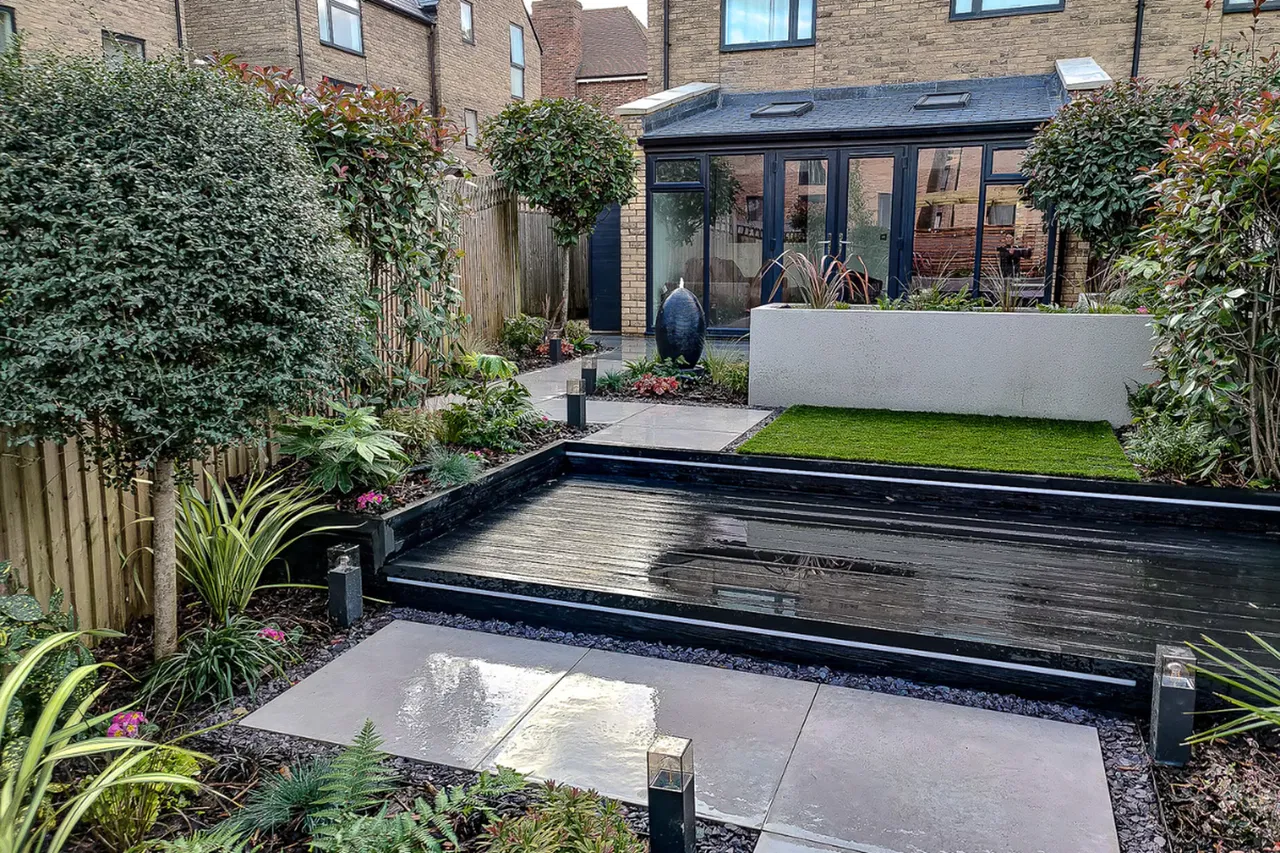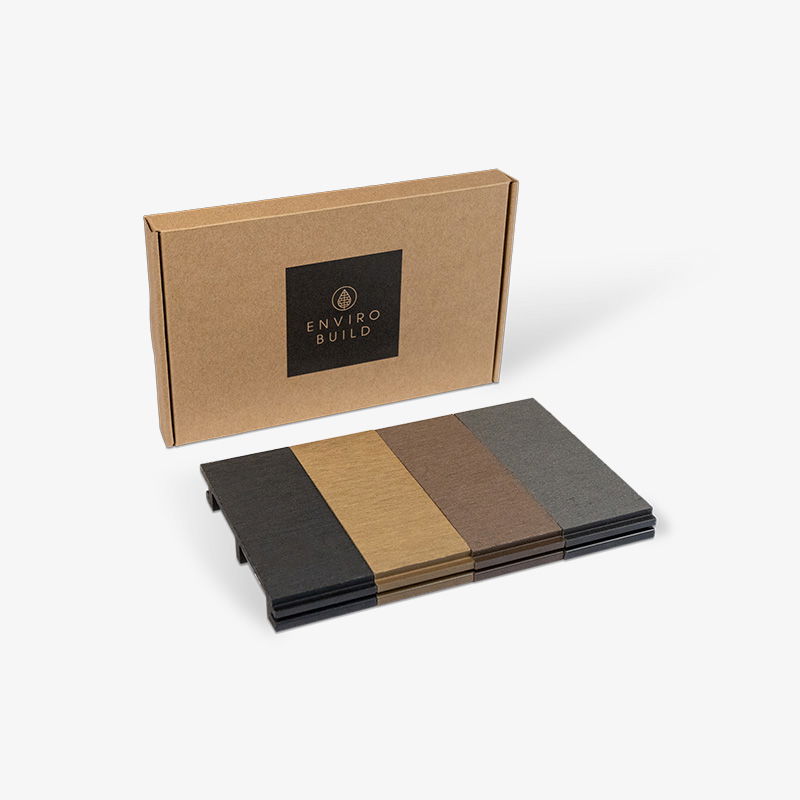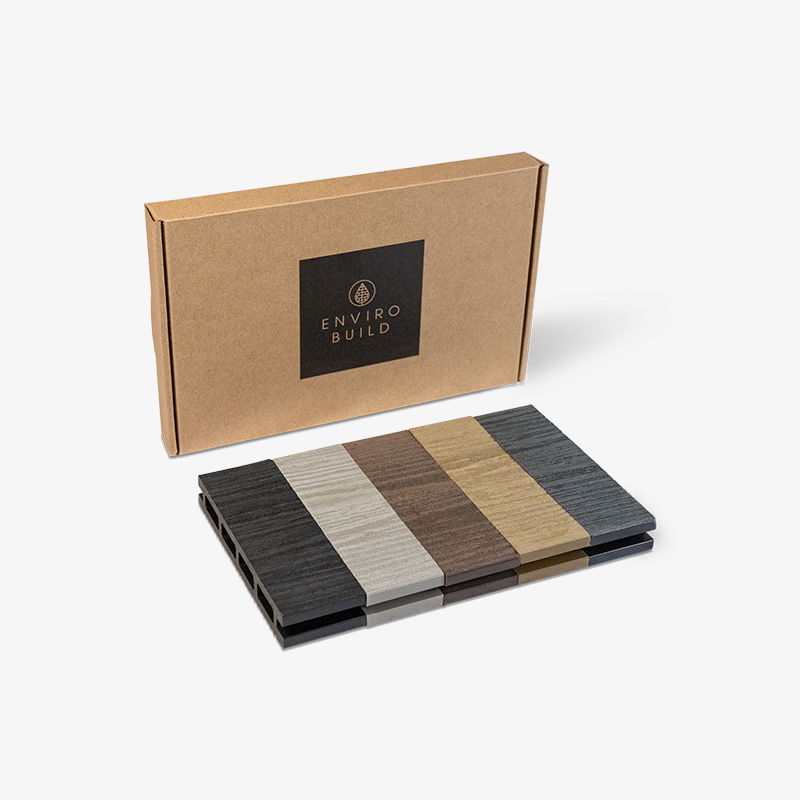Is Composite Decking Slippery When Wet?
Outdoor surfaces naturally face changing weather conditions, from summer rain showers to winter frost. For anyone planning a new deck, slip resistance is one of the most important safety considerations.
A common question homeowners and specifiers ask is: “Is composite decking slippery when wet?”

Author Name
Chief Writer
Thu, 28 Jul 2026

The short answer: No, even when wet, composite decking has a low risk for slip potential. Keeping your deck clear of mildew and algal growth will help preserve the non-slip properties.
When properly installed and maintained, composite decking is not slippery when wet. In fact, it offers superior slip resistance compared to timber, along with better durability, lower maintenance and greater sustainability.
With embossed textures, capped surfaces, and industry-tested traction ratings, EnviroBuild composite decking ensures year-round safety and performance, even in the wettest UK conditions.
EnviroBuild Composite Decking Slip Rating
EnviroBuild composite decking has been independently tested as anti-slip and skid-resistant, with a low risk for slip potential.
The following slip test results for EnviroBuild composite deck boards are as tested to the BS7976-2: 2002 standard (Pendulum Test – 4S Rubber). The 4S Rubber slider is used to imitate everyday pedestrian shoes (not necessarily anti-slip safety footwear), so the slip resistance would represent someone wearing shoes and not barefoot.
The results were achieved by an independent testing facility and are from samples of clean boards picked at random. Because of the variable nature of the natural and recycled materials used in the manufacture of Hyperion Decking, slip resistance results may vary slightly from batch to batch.
It is also worth noting that keeping your decking surface clean and clear of mildew and algal growth will help to retain its non-slip properties.
Surface
Pendulum Test (CoF)
R-Rating
Slip Potential
Explorer Composite Decking (Dry)
62
R12
Low Risk
Explorer Composite Decking (Wet)
49
R11
Low Risk
Frontier Composite Decking (Dry)
46
R11
Low Risk
Frontier Composite Decking (Wet)
38
R11
Low Risk
Why Surfaces Become Slippery
It can be helpful to understand why any surface can become slippery in the first place.
The main causes include:
Standing water: Rainwater or condensation that doesn’t drain away properly can create a slick surface.
Mould and algae growth: Shaded or damp areas may develop organic build-up that increases slipperiness.
Surface wear: Smooth or weathered decking surfaces lose texture over time, reducing traction.
Poor maintenance: Dirt, leaves or grime left on the surface can act as a film between shoes and boards.
Composite decking systems help combat these issues through advanced surface engineering and consistent water drainage.
How Composite Decking Improves Slip Resistance
Composite decking is engineered from a mix of recycled wood fibres and plastic, creating a dense, durable surface that performs consistently year-round. Unlike timber, which absorbs water and becomes slimy or uneven, composite boards are water-resistant and dimensionally stable.
Key features that enhance slip resistance include:
Textured Surface Finishes -
High-quality boards, like EnviroBuild’s Frontier and Explorer ranges, feature a brushed or embossed surface that mimics natural wood grain. This texture increases traction underfoot, even when wet.
Low Water Absorption -
Because composite decking absorbs less than 1% water, the boards dry quickly after rain and are less likely to develop algae or moss compared with porous timber.
Capped Protection Layer -
Many modern boards, like the Frontier decking range, include a capped protective layer, sealing the surface from moisture ingress and making cleaning easier. The cap also resists staining and fading, keeping the anti-slip texture effective for years.
Consistent Manufacturing Quality -
Unlike timber, which can vary in grain and hardness, composite decking offers uniform texture and performance across every board, ensuring consistent slip resistance across the entire deck.
Testing Deck Board Slip Resistance
Workplace (Health, Safety and Welfare) Regulations 1992 require floors to be suitable, in good condition and free from obstructions, so that people are able to move about safely.
The Health & Safety Executive (HSE) guidance has determined that the most reliable and robust test method for the slip resistance of a floor surface is the Pendulum Test. This is the method checked when they are looking at enforcement action and local authority advice.
The pendulum method (BS 7976: Parts 1-3, 2002) works by replicating a heel striking a surface in a dynamic way, as shown in the diagram below. The test is designed to replicate a pedestrian heel strike, the point at which most slips occur. When a pedestrian heel strikes a wet floor a fluid film is created between them, which can cause the slip (90% of slips occur on wet floors). The test therefore works in wet conditions because it generates a similar fluid film between the slider and the floor. (The heel strike is point 2).
The result (which is at point 3) is called the Coefficient of Friction (CoF), a direct measure of the slip resistance of a floor.

The flooring is tested in three directions (with any grain, 45 degrees from grain, 90 degrees from grain) and the mean average of the CoFs found used as the overall CoF.
The slider referred to in test data is also important; two sliders are commonly used, one for shod pedestrians and one for barefoot.
Any CoF value over 36 is regarded as “low slip” on flat surfaces – meaning the probability of one fall per million footfalls. Note that the Pendulum Test Value and the probability of a slip on a floor is not a linear scale: a drop of just two PTV from 36 to 34 will reduce the ability of the floor to resist slip by 10 times.
Pendulum Test Value (PTV)
High Slip Potential
0 - 24
Medium Slip Potential
25 - 35
Low Slip Potential
36+
The value found relates to pedestrians walking in a straight line on a level surface. For other activities or inclined surfaces, the table figures will change, e.g. the value of CoF is reduced by 1.76 for every 1 degree of slope. This value will be recorded on dry and wet surfaces.
Floor R-Rating
Flooring is often given an R-rating. This is a value from 9 (very slippery) to R13 (not slippery) and is determined by the point at which people generally fall when taking small forwards and backwards steps on an oil covered flooring sample that is having its ramp (angle of incline) gradually increased.
Because the test gives a range, requires boots that people don’t generally wear and uses oil HSE has determined to prefer the CoF pendulum method.
All our flooring contains a CoF rating, and for convenience and comparison an R-value is given for porcelain as this is a value some people in the industry are still familiar with.

The approximate conversions between the two rating systems is given in the following table:
R-Rating vs. Pendulum Test Value (PTV)
DIN 51130 Classification
R9
R10
R11
R12
R13
Coefficient of Friction (CoF)
11-18
18-34
34-51
51-70
>70
Disclaimer: It is the customer’s responsibility to determine the suitability of EnviroBuild Hyperion Decking for their particular private or commercial installation. EnviroBuild can provide test reports including a report for slip resistance to help. Should your plans include a ramp or incline of any kind it is the customer’s responsibility to ensure the installation meets Part M regulations ("Access to and use of Buildings") which stipulate the angle of slope required and the interval for rest areas. To assist with extra tread purchase we recommend the fitting of Grit Strips to the board surface. Always install boards at right angles to the main direction of travel to make best use of Hyperion Decking’s slip resistant properties. To maintain traction levels similar to the results shown, it is imperative that the deck is designed to allow proper drainage and the deck surface is kept as clean as possible.







